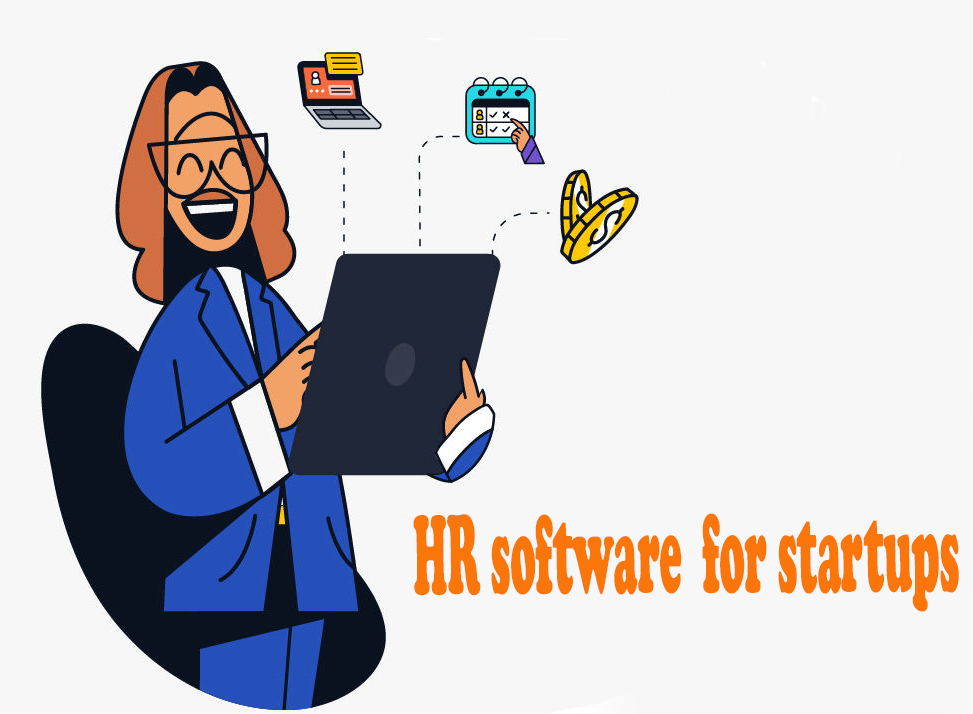The Rise of HR Software Investment
HR Software Investment: With the current surge in digital transformation, an increasing number of business leaders are recognizing the importance of investing in specialized HR software vendors. Recent statistics show that over a third of business leaders plan to invest in HR software vendors within three years, while another quarter are looking to do so in the near future.
This is not just about jumping on the bandwagon – it’s strategic planning for efficient HR administration.
As Henry Ford once said, “If everyone is moving forward together, then success takes care of itself.”
In today’s competitive landscape where businesses vie for top talent while grappling with complex labor laws and regulations, streamlined HR operations can be a game-changer. The right investment in acquiring specialist HR software vendors ensures that these processes become more manageable by automating tasks like payroll processing or employee data management – making life easier both for your organization’s HR requirements as well as its employees.
Prioritizing Business Focus Areas
Moving beyond mere efficiency considerations, organizations are also prioritizing certain key areas such as reducing turnover rates, which directly impact growth trajectories; streamlining internal procedures leading towards improved productivity levels; enhancing skills and capabilities amongst workforce members, etc., all aimed at fostering sustainable development over time.
One finds commonalities across sectors when it comes to these focus areas – reflecting their universal relevance irrespective of size or type.
This underscores how progressive HRIS vendors could play pivotal roles supporting lower management levels’ decision-making responsibilities related to performance outcomes along various dimensions, including retention/reducing turnover rate through better hiring process strategies, among others.
Digital transformation is on the rise, with 35.6% of businesses planning to invest in specialized HR software within three years. Streamlined operations are a game-changer in today’s competitive landscape. #HRSoftwareInvestment #BusinessGrowthClick to Tweet
Priorities and Trends in HR Software Investment
Uncover the latest trends in HR software investment, key business focus areas, and the rise of performance management tools in transforming HR.
Prioritizing Business Focus Areas
In the last year, organizations have highlighted several critical business focus areas. These include not only reducing employee turnover and enhancing retention rates but also refining HR operations and processes, bolstering skills within teams, strategizing for workforce succession planning, and preparing for rapid expansion.
These priorities are crucial across various sectors, signifying common business focus areas that directly influence an organization’s standing in a competitive market landscape.
The Shift in Remote Work Priorities
The global pandemic propelled many businesses into adopting remote work models almost overnight. Optimizing remote work quickly rose to become a top priority. However, as we transition into the post-pandemic era with changing work patterns becoming increasingly evident, this is no longer seen as a significant concern among future business focus areas.
This shift indicates that companies are now looking beyond just managing remote workers effectively. They’re investigating ways to leverage technology such as virtual collaboration tools or harness data analytics for informed decision-making at lower management levels.
Discover the latest in HR software investment trends. Priorities include reducing turnover, refining operations, and leveraging tech for effective remote work. #HRtrends #BusinessGrowthClick to Tweet
Understanding the Role of an HR Information System (HRIS)
The journey to efficient HR administration often leads organizations down the path of investing in a comprehensive solution known as an HR Information System (HRIS). This system is not just software; it’s a strategic tool designed to streamline data entry, automate routine tasks, and provide crucial insights into workforce trends.
A deeper look at what makes up an effective HRIS.
“Power comes from knowledge,” Sir Francis Bacon famously declared. In today’s digital age, this statement rings true more than ever before.
An understanding of how your organization can benefit from acquiring specialist HR software vendors starts with recognizing that these platforms are much more than mere administrative tools. They serve as hubs for employee data, providing key information needed for informed decision-making within organizations’ lower management levels.
Shortlisting Progressive HRIS Vendors
Diving deep into vendor selection. Choosing suitable HRIS vendors goes beyond merely comparing prices or going by popular choice among peers in your industry sector. It requires careful consideration about products’ capabilities internally – does the platform align well with current business needs? Does it offer features tailored specifically towards meeting organization’s HR requirements?
Bonus points if you examine their approach towards handling employee data efficiently – considering the increasing cyber threats landscape globally, ensuring robust security measures should be a top priority when shortlisting progressive HRIS vendors.
Unleash the power of HRIS. It’s more than software, it’s a strategic tool for data entry automation and workforce insights. Choose wisely considering security in today’s cyber threat landscape. #HRSoftware #CyberSecurityClick to Tweet
Performance Management Software on the Rise
The world of HR technology is witnessing a significant uptick in the adoption of performance management software. As organizations become more data-driven, this type of HR software has emerged as one of their top investment priorities.
This trend towards prioritizing performance management tools isn’t surprising.
A famous saying goes, “What gets measured gets managed.”
In an era where businesses are constantly seeking ways to enhance efficiency and productivity, having robust systems for tracking and analyzing employee performances becomes indispensable. And that’s precisely what these advanced HR systems offer.
Here’s why investing in such platforms makes perfect business sense:
- These sophisticated HR information system solutions provide comprehensive insights into key indicators like productivity levels or goal attainment rates, thereby aiding informed decision-making responsibilities.
- By identifying potential skill gaps early on through detailed analytics capabilities provided by these platforms, companies can proactively address them before they impact common business focus areas negatively.
- Effective use of such technologies encourages open dialogue about expectations & progress between managers & employees, fostering a continuous feedback culture within the organization, thus aligning individual goals with broader organizational objectives.
Trends Influencing Investment Decisions in Performance Management Tools
“A leader is one who knows the way, goes the way, and shows the way,” said John C. Maxwell.
Keeping pace with evolving trends shaping future business focus areas remains crucial when it comes to making strategic investments, especially those related to acquiring specialist HR software vendors.
Here are some noteworthy ones:
- Data Integration Across Multiple Platforms: One major trend includes integration capabilities offered by HRIS vendors, allowing seamless sharing across different aspects of human resources operations, leading towards a holistic view of the employee lifecycle within an organization.
- Advanced Analytical Features: Vendors offering cutting-edge analytical features enabling a deep dive into various facets, including the hiring process or succession strategies, have gained increased preference among organizations striving for efficient HR administration.
Key Takeaway:
Performance management software is seeing a surge in HR tech investments, thanks to its ability to provide comprehensive insights into employee productivity and goal attainment. With these tools, businesses can identify skill gaps early on, foster open dialogue about expectations and progress, align individual goals with broader objectives, integrate data across platforms and leverage advanced analytics for efficient HR administration.
Decoding Key Considerations in Choosing HR Software
The quest for the perfect HR software can feel like navigating a labyrinth. Careful evaluation of key factors can help you find HR software that meets your business objectives and improves operational efficiency.
Compatibility is king:
A new system must integrate seamlessly into existing IT infrastructure. It should handle employee data efficiently and aid decision-making at lower management levels, thereby ensuring efficient HR administration.
User-friendliness matters:
An intuitive interface reduces training time and boosts adoption rates among staff members. The easier it is to use the software, the more likely employees will utilize its full potential, leading to better outcomes in managing the organization’s HR requirements.
Foresight: A Scalable Solution for Future Growth
Your chosen solution needs room to grow alongside your company; this means accommodating increases in workforce size or changes without significant additional costs or disruptions. Whether it’s expanding internationally or simply growing locally, having a flexible system can save resources down the line.
In addition to scalability, cost-effectiveness plays a crucial role when shortlisting progressive HRIS vendors. Forbes’ article on tech investments offers some useful perspectives here.
Vendor Support: An Unseen Safety Net
Picking up from where we left off on total rewards as the third-largest investment area, focusing on equitable reward and recognition programs along with well-being programs, vendor support becomes critical during the implementation phase and afterwards while acquiring specialist HR software vendors.
To summarize these considerations succinctly: compatibility ensures seamless integration within current systems; ease of use promotes higher adoption rates among users; scalable solutions prepare organizations for future growth scenarios; cost-effective options ensure value-for-money investments; finally, robust vendor support guarantees continuous help throughout the usage period.
Key Takeaway:
When choosing HR software, prioritize compatibility with existing systems, user-friendliness to boost adoption rates, scalability for future growth, cost-effectiveness for value-for-money investments and robust vendor support. These factors ensure a smooth integration process and efficient operations down the line.
Navigating the Surge in HR Administration Costs for Future Investments
With administration costs per employee rising from $155 to an anticipated $194, businesses are grappling with increased expenses. This uptick is largely attributed to a surge in data entry and record-keeping tasks integral to managing human resources.
The impact of these escalating costs on future investments cannot be overstated.
It’s like trying to keep your boat steady amidst stormy seas – you need all hands on deck, but that comes at a cost. Increased compliance requirements have further added fuel to this fire by necessitating additional personnel or outsourcing services – both costly propositions.
This financial strain has prompted organizations into reevaluating their investment strategies; steering towards efficient HR administration through HR technology solutions such as performance management software and HR information systems (HRIS). These tools automate routine administrative tasks, reducing manual effort while minimizing errors associated with manual handling of data, thus creating smoother sailing waters ahead.
In Pursuit of Cost-Efficient Solutions
Finding ways around these soaring administrative costs can feel akin to navigating uncharted territories without a map. But fear not. A comprehensive suite of progressive HRIS vendors offer products’ capabilities internally, which could potentially offset mounting admin overheads by streamlining processes whilst eliminating the necessity for extra staff or outsourced services.
Balancing Act: Weighing Costs Against Benefits
Akin to investing in any new tool, it’s essential that organizations weigh up its return on investment (ROI) against initial outlay. While there might be upfront charges linked with acquiring specialist HR software vendors implementing new systems, one should look beyond just immediate expenditure.
Organizations must consider long-term benefits, including improved efficiency along with better decision-making abilities provided by advanced features offered within modern-day HRIS platforms, making them worth considering despite higher setup fees. Capterra research highlights how using self-service portals enables employees at lower management levels to access relevant info themselves, thereby lessening workload pressure upon already stretched-thin HR teams considerably.
Key Takeaway:
With HR administration costs rising, businesses are feeling the pinch. However, investing in efficient HR tech solutions like performance management software and HRIS can automate routine tasks, reducing manual effort and errors. It’s about navigating stormy seas to find smoother waters ahead.
Investing In Employee Learning And Development
In the realm of HR software investment, one area that stands out is employee learning and development. A surprising 45% of employees believe their organization’s learning programs lack relevance to them personally or professionally.
This disconnect presents a golden opportunity for businesses.
The great Albert Einstein once said, “Once you stop learning, you start dying.” The same can be applied in an organizational context. When your workforce stops developing new skills and capabilities, growth stagnates.
To avoid this scenario, organizations need to invest more heavily in technologies enhancing skills management solutions. These investments will not only help align training initiatives with individual goals but also ensure they meet the organization’s HR requirements effectively.
Enhancing Hiring Process through Technology
Hiring – it’s often seen as a necessary evil within business operations. Traditional methods are time-consuming and limit access to potential candidates due to geographical constraints or inefficient sourcing strategies.
A shift towards technology-driven hiring processes could revolutionize recruitment outcomes for companies worldwide.
Digital platforms leveraging AI algorithms offer innovative ways to streamline the hiring process while expanding reach globally. These tools provide valuable insights into candidate profiles beyond what resumes reveal; assessing cultural fitment, predicting performance outcomes, and identifying skill gaps which can then be addressed post-recruitment via targeted training programs.
This strategic approach enhances recruitment efficiency significantly by replacing intuition-based decisions with data-backed intelligence, according to an HRTechnologist report. This leads not just to better hires but also contributes positively towards long-term retention efforts too since well-trained employees tend to stay longer at organizations offering continuous upskilling opportunities.
Boost your business growth. Invest in HR software to enhance employee learning and streamline hiring. Align training with individual goals for better retention. #HRtech #BusinessGrowthClick to Tweet
Shifting Focus Towards Total Rewards
In the ever-evolving landscape of HR software investment priorities, total rewards have emerged as a significant area. This shift in focus is not merely a trend but reflects an understanding of their profound impact on employee engagement and productivity.
Total rewards are more than just monetary compensation.
The concept encompasses benefits such as health insurance, retirement plans, and paid time off, along with intangible aspects like work-life balance and opportunities for professional growth. The aim is to devise a fair remuneration system that acknowledges workers’ efforts while simultaneously enhancing their well-being.
Equitable Reward & Recognition Programs
To build effective reward programs requires ensuring equity across all levels within your organization. This involves recognizing individual efforts through mechanisms like spot awards or achievement bonuses while also rewarding team achievements simultaneously.
An equitable reward program should be transparent and consistent so every employee understands how they’re being evaluated against set benchmarks. Performance-based pay structures can help drive this transparency by motivating employees towards achieving defined goals, which aligns with efficient HR administration strategies. Gallup reports suggest organizations having robust total rewards programs experience higher levels of employee engagement directly influencing positive business outcomes, making it a worthwhile HR technology investment priority.
Focusing on Well-being Programs
Beyond financial incentives lies another critical component of total rewards – well-being programs ranging from providing gym memberships or mental health support services to flexible working arrangements allowing better work-life integration.
Research shows these initiatives significantly contribute towards improving job satisfaction rates, leading to increased productivity among teams, thus making them valuable investments under the organization’s HR requirements umbrella.
To conclude, shifting focus towards total rewards does not only mean investing heavily in tangible benefits but also addressing intangibles such as workplace culture; creating an environment where each member feels valued, and contributing positively toward overall organizational success, thereby strengthening common business focus areas and further cementing its place among future business focus areas.
Key Takeaway:
Total rewards, extending beyond monetary compensation to include health benefits and professional growth opportunities, are becoming a priority in HR software investment. Ensuring equitable reward programs and focusing on employee well-being can boost engagement and productivity, reinforcing the importance of investing in total rewards systems.
Conclusion
HR software investment is a game-changer.
It’s not just about streamlining operations anymore, it’s transforming the HR landscape.
The rise in remote work has shifted priorities, and business focus areas are evolving rapidly.
An efficient HR Information System (HRIS) can be your secret weapon for effective decision-making at all levels of management.
Performance management software? It’s on the rise, helping businesses enhance their processes like never before.
Your choice of HR system matters – compatibility, ease of use, scalability, and cost-effectiveness should be top considerations.
Inflation in administration costs per employee? Yes, that might influence future investments, but don’t let it deter you from investing smartly.
Focusing on learning and development technologies can make your employees feel more valued while enhancing skills management solutions.
Hiring process too cumbersome? The technology could streamline it while giving you access to a larger talent pool.
If you want to learn more about this, sign up for my newsletter.


